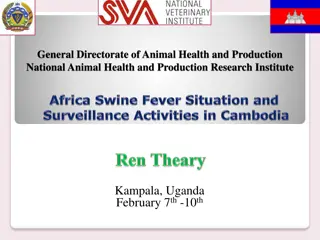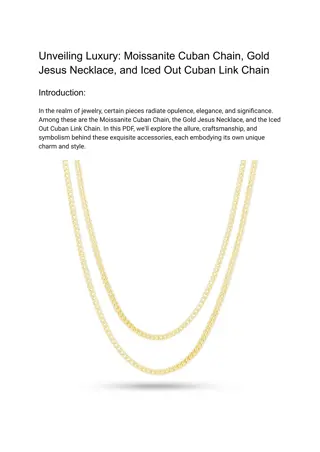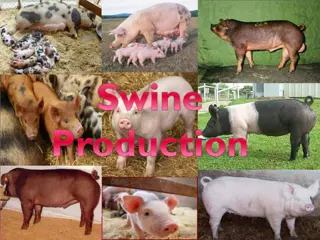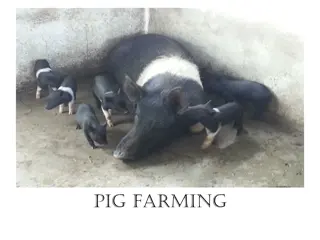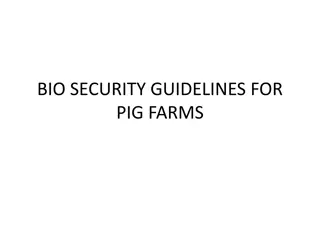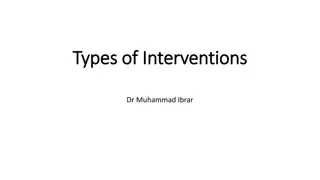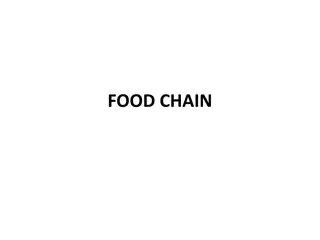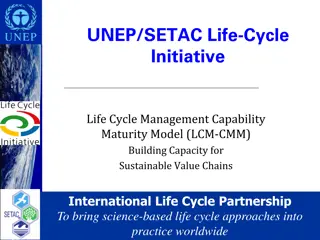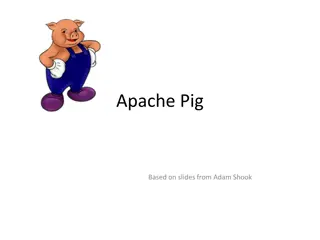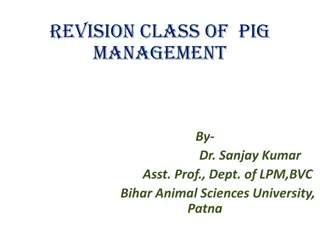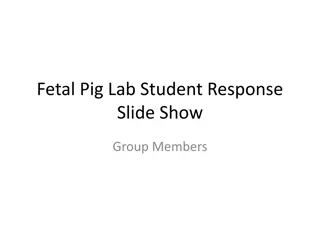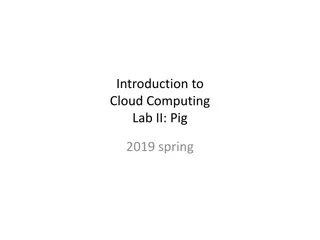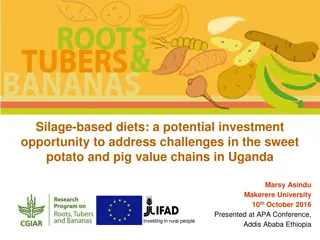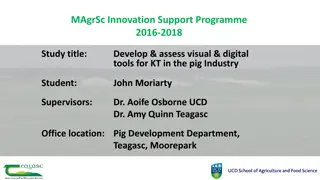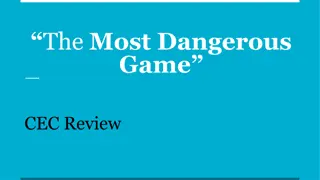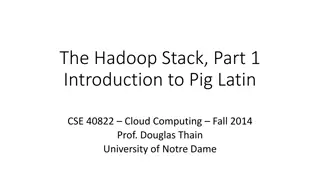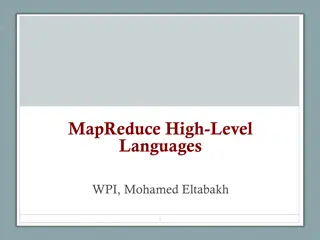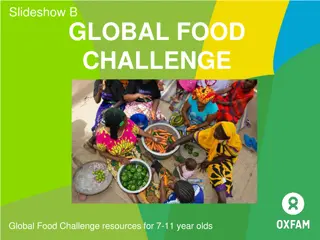Enhancing Pig Value Chains Through Innovation and Intervention
Conduct research to identify innovative solutions in gender, nutrition, environmental sustainability, and value chain upgrading/transformation. Utilize systems analysis to design integrated intervention packages for pig value chains. Learn from outcomes to adapt operations and activities, focusing on Theory of Change and impact assessments for sustainable development. Address main challenges such as environmental issues, malnutrition, seasonality, gender disparities, and lack of coordination. Implement activities like biodigesters and technology testing to drive positive outcomes for pig value chains.
Download Presentation

Please find below an Image/Link to download the presentation.
The content on the website is provided AS IS for your information and personal use only. It may not be sold, licensed, or shared on other websites without obtaining consent from the author. Download presentation by click this link. If you encounter any issues during the download, it is possible that the publisher has removed the file from their server.
E N D
Presentation Transcript
SASI clusters of activities 1. Conduct system component research and identify promising innovations : a) Gender; (b) Nutrition; (c) Natural resources and the environment; (d) VC upgrading; (e) VC transformation 2. Conduct systems analysis guiding the design and development of integrated intervention packages for the VCs a) Diagnosis (now and future); (b) Design 3. Learn lessons and adapt VC and CRP operations and activities a) ToC; (b) Impact assessments; (c) documentation of learning
Super product Evidence-based pig VC transformation
Research outcomes Evidence about impacts of the VC on environment, gender, nutrition, income, productivity, Evidence about suitable and feasible integrated VC interventions and their potential impacts on environment, gender, nutrition, income, productivity,
Development outcomes Increased awareness amongst policy makers, development organisations about the potential of the pig VC for income creation and contribution to nutrition and food security and the required policies and effective implementation Increased awareness among pig VC actors about the potential benefits of the pig industry Farmers and other VC actors have access to information on how to increase pig production and benefit most from the pig VC
Main challenges Environmental issues (waste, soil, ) High level of malnutrition amongst children, food access within the households Seasonality of supply, matching demand and supply Gender issues: pigs mostly managed by women and children vs. decision-power over land allocation for e.g. forages, crops (for residues) labour income: constraints for women along VC beyond production + inequitable returns to labour Lack of coordination of the pig value chain, Poor access to BDS by producers (extension services, markets, ) Uncertainty about information/data about trends in pig production: pigs often under-represented in the UBOS surveys
Activities Environment: Biodigesters: Pilot-test substrates for bio-digester @slaughter node (Wambizzi abattoir) Documentation (manual, journal paper) Disseminate findings (meetings, website) Follow-up on recommendations from 2015 consultancy on utilisation of wasted pig parts IMO technology @production node: On-station testing (Muzardi Mukono district) On-farm testing (Mukono) Documentation (manual, theses, journal paper) Disseminate findings (meetings, website)
Activities (contd) Gender Monitor gender-effects of the pig business hub (Masaka) Approaches for women to benefit from business hubs: Identification Testing documentation Assess gender-related constraints along the VC (through PhD, site TBD) Nutrition Follow-up on nutrition/consumption survey Testing interventions (Kamuli, Masaka, Lira) Document
Activities Contd VC upgrading and transformation Analysing different business models for delivering the value chain outputs in different regions and necessary conditions (general) Pilot test the analysed models in the different regions and context (either Lira, Hoima or Kamuli depending on a set criteria) Desk study (report, working paper) Pilot testing Documentation (web reports, etc)
Activities Contd Diagnosis/Design Find funding for pig survey Policies: Policy review Extrapolate analysis Policy recommendations
Activities best-bets for pilot testing Participatory workshops for selecting best-bets Identify knowledge gaps Plan/recommend further studies around knowledge gaps Ex-ante impact assessments Design data collection protocol covering different dimensions such as nutrition, gender, environment, productivity, health, Incorporate findings of pilot testing and further studies into a refined best-bet intervention package Identify out-scaling potential


